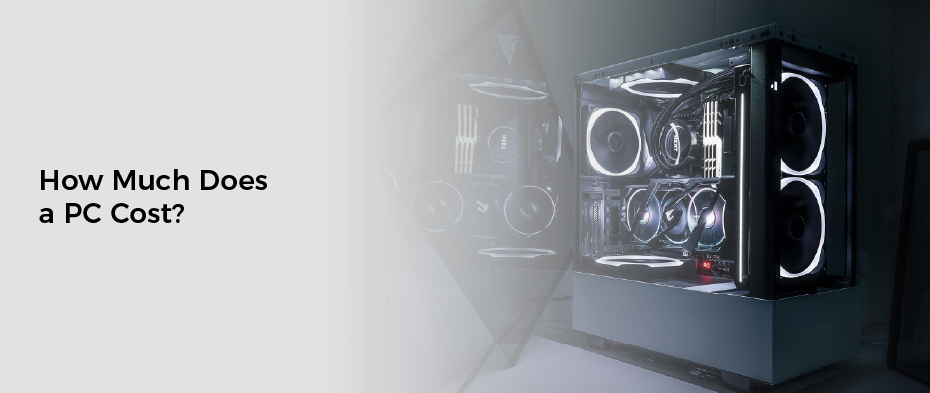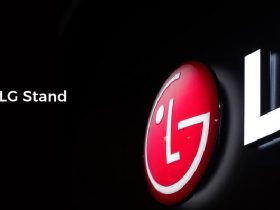The price of your PC will vary depending on the model you get, the type of CPU you choose and what kind of storage drives you use. If you are thinking about purchasing a new PC, you’ll need to consider these factors so that you can make an informed decision. You’ll also need to compare different models so that you can find the best deal.
CPU
The price of a computer is largely dependent on the type of PC you’re looking to purchase. For example, a desktop computer with a top-of-the-line processor can cost several hundred dollars. If you’re shopping for a laptop, the price may be a lot less.
Depending on your specific needs, there are many different types of computers to choose from. You can purchase a desktop PC with integrated graphics to improve the gaming experience or a mobile model with the latest in performance tech. Those looking to maximize productivity may want to build their own system. Whether you’re building a gaming computer or just upgrading your workstation, you’ll want to choose a machine that meets your budget and your needs.
A high-end CPU can cost from $200 to more than a grand. While that’s a lot of money, it’s worth it if you’re looking to improve the overall performance of your machine.
The cost of a CPU may seem like an impossibility, but you can get one that offers all the power and features you need at a fraction of the price. Purchasing a cpu with an iGPU can save you as much as a hundred dollars.
Using a multi-core CPU allows you to handle more calculations at once. This can help you avoid the CPU bottleneck phenomenon. Luckily, these CPUs are available in a variety of prices, so you’re sure to find the right model for your needs.
GPU
If you are wondering how much a GPU costs, the answer is a lot. The average price has increased over the past two years. This has been largely caused by a rise in demand, coupled with chip shortages.
While the cost of a graphics card can vary depending on your needs, the best deal is usually to upgrade to a newer model. Modern GPUs use advanced materials and technologies to ensure the best performance possible.
However, the latest generation is also more difficult to produce. This has resulted in higher manufacturing costs. For example, Nvidia’s RTX 3080 has more cores per compute unit than its predecessor. It’s also able to do concurrent integer operations.
In fact, some models are selling for only $1,200. Although not necessarily cheap, the RTX 3070 is priced at $499, while the RTX 3060 is only $819.
A new generation of GPUs is expected in the coming year. They will likely not sell for the prices retailers could charge earlier, but will likely still be more affordable than their older counterparts.
When it comes to comparing the price of a GPU to its performance, Nvidia is a clear winner. Although AMD has started competing in the high-end graphics card market, they are largely outshined.
A team of 100 engineers probably spent more than a hundred million dollars developing the RTX 3070’s design. In order to make it work, they had to write drivers, check logistics, and more.
Power supply
When calculating how much a PC costs, you need to consider the cost of the power supply. This component is responsible for converting AC power to DC power. It also protects the system from degradation or overload.
The typical desktop computer uses between 60 and 300 watts. However, high-performance systems may need more. A 650 watt power supply would be enough for a new GTX 1080, while a larger capacity model might be needed for a GTX 3090 Ti.
The type of power supply that you choose is very important. Choosing an efficient power supply will help you save money on your electricity bill.
If you are on a budget, the Thermaltake Smart series of power supplies is a great choice. These units are 80 PLUS certified and come with good components. They are available for under $75, which is a good price for a quality PSU.
If you want to spend a little more, a gold-tier power supply is a good option. This is an advanced level of power supply that is almost 90% efficient.
If you’re looking for a power supply with a higher wattage, the EVGA SuperNova series is a good option. Besides being well built, the power supply has been awarded the PC Perspective Editor’s Choice award.
Another popular option is the Corsair CX 550/650 watt models. These are semi-modular, which means they have fewer hardwired cables. Their solid construction and low noise levels make them a good choice.
Storage drives
If you’re looking to buy a storage drive for your PC, there are several factors to consider. The key is to find the right drive for the purpose. For example, a casual user might need 500GB of storage, while an advanced user might want a 1TB backup drive. These drives cost more than a standard hard disk drive (HDD) or solid state drive (SSD), but have the advantages of faster read/write speeds and better durability.
Hard drives are mechanical drives that use spinning magnetic media. They are accessed by a read/write head that is attached to an actuator arm. This is similar to how a thumb drive is accessed.
HDDs are often faster at reading and writing data, but they are also heavier and less durable. SSDs are more expensive, but they are much faster, more durable, and use flash memory instead of spinning metal disks.
A desktop hard drive weighs more and requires more cables. Mobile hard drives are typically smaller and less expensive. You can buy an external hard drive that connects to a USB port. External hard drives can be HDDs or SSDs.
Regardless of which type you purchase, it’s important to remember that there are many different types of drives. In addition, the capacity of each type will vary. So, you should shop around and compare different models before making your decision.
Pre-built vs custom-built
When purchasing a PC, you need to decide whether to go with a custom built PC or a pre-built computer. It’s a decision that will have a lot to do with your needs and budget. If you don’t have the time or knowledge to build your own PC, a pre-built option may be a great choice for you.
There are many advantages to building your own computer. You’ll be able to choose your own components, thereby getting a better PC for your money. But there are also some downsides. Building a PC can be difficult, and there’s a risk of user error. In addition, it can take a long time to do so.
Pre-built computers are usually sold by retail vendors. These systems are tested to ensure that they are compatible with each other, and they come with a seller warranty. They are also more convenient. Most include software and peripherals that you can plug and play.
Pre-built systems offer the same price to performance compared to DIY builds. The reason is that the PC makers are able to buy parts from OEMs at a lower cost. While some of these components may be expensive, they often have better quality than bulk-ordered ones.
Buying a pre-built system also saves you the hassle of putting together your own machine. A pre-built PC is less likely to be mistreated or get viruses. However, it may not be optimized for your particular needs.
AMD vs Intel
AMD and Intel have been competitors for nearly half a century. Their respective CPU lines have been the best for gaming PCs, workstations, and more. In fact, Intel was the first CPU manufacturer to deliver microprocessors to IBM’s first personal computer.
But as of the last few years, the two companies have been competing in different architectures. Intel was more advanced, but it has struggled to catch up with AMD’s efficiency.
AMD’s Zen architecture was designed to be power efficient, but it doesn’t match the single-thread speeds of Intel’s Alder Lake microarchitecture. However, it has more cores, which helps it out.
AMD’s Zen architecture also has a multi-thread capability. It also has a very impressive clock speed. That means it can process a lot of information in a short amount of time.
While it’s not an over-the-top feat, AMD’s Precision Boost Overdrive is a clever feature that will take into account the capabilities of the chip and the power delivery subsystem of the motherboard. With the feature, users can automatically overclock the processor and get the most performance possible without hassle.
On the other hand, Intel’s Alder Lake architecture pairs small, efficient cores with large, performance cores. These big performance cores help give Intel a clear lead in the single-threaded applications department. They are also very useful for heavy-duty background applications.
Compared to the competition, however, it’s hard to tell which architecture is the better choice. Both AMD and Intel are making innovative new products.







Leave a Reply